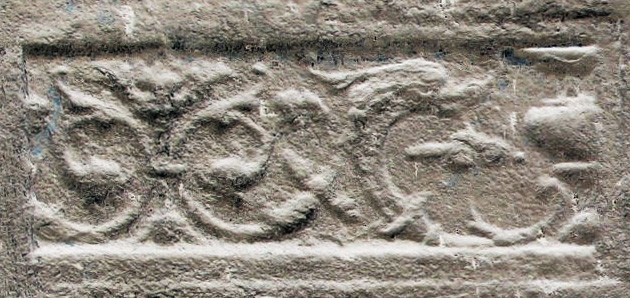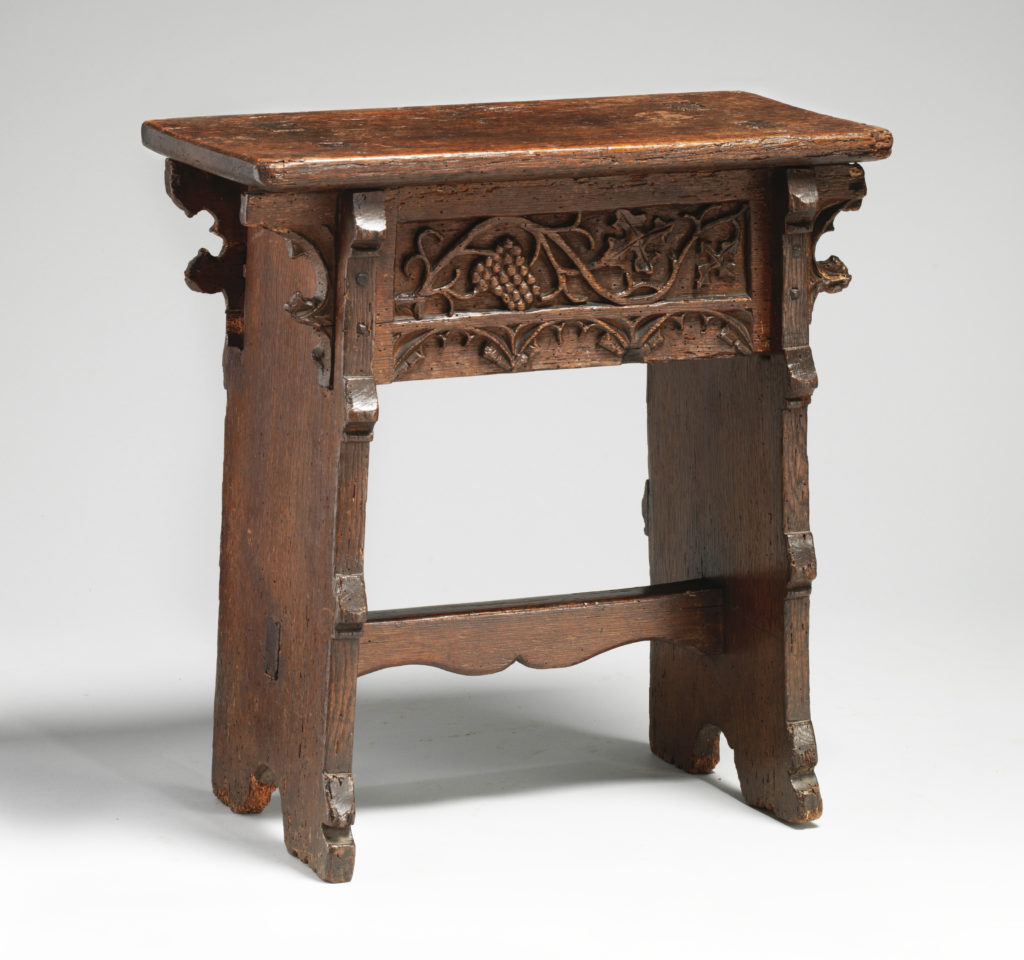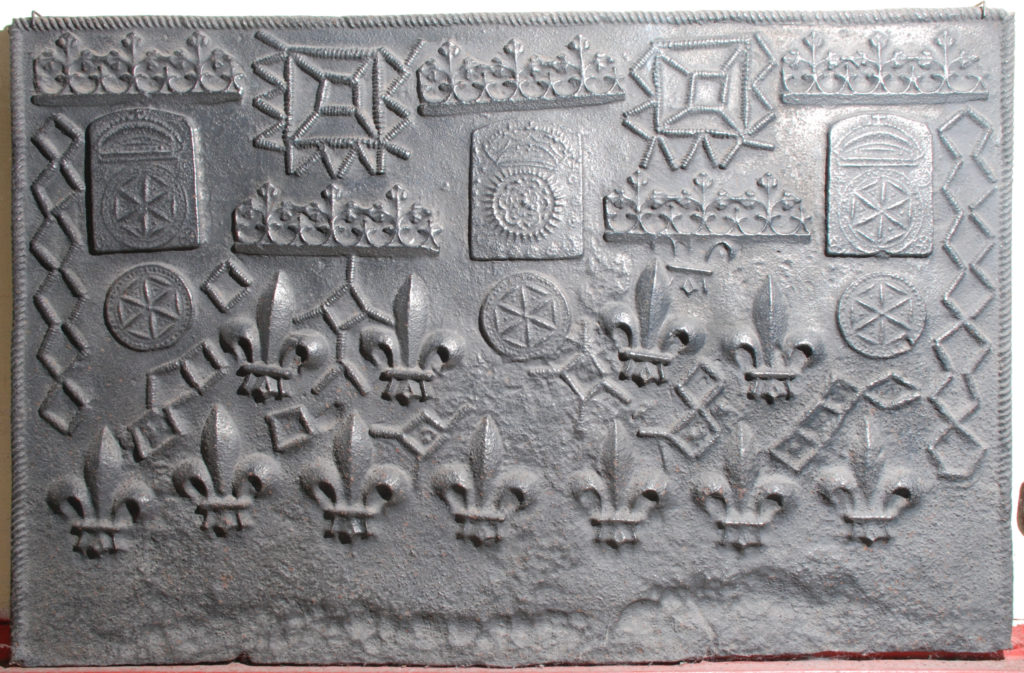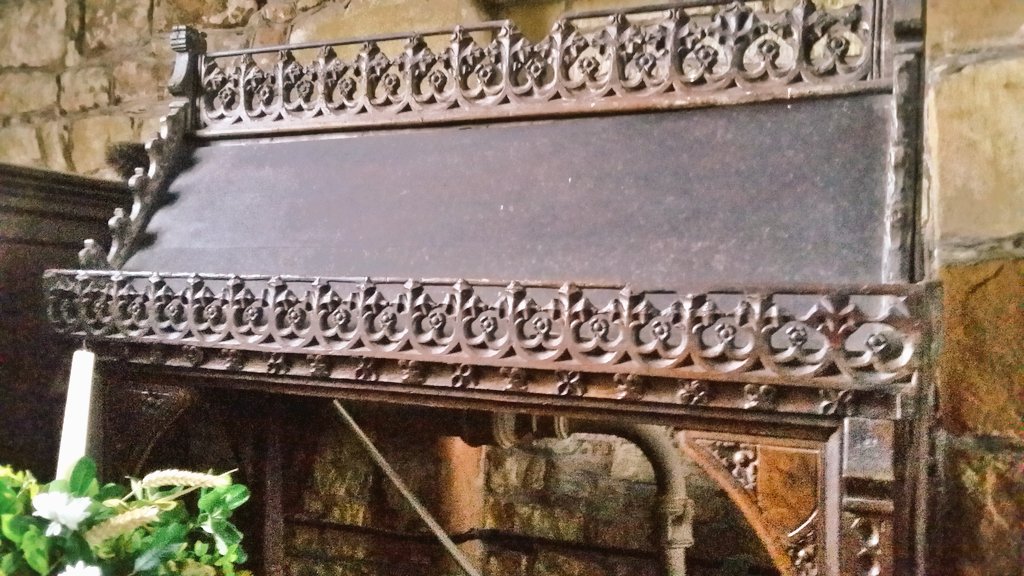When I wrote British Cast-Iron Firebacks I drew attention to several everyday objects that had been used as decorative stamps. These included butter and pastry moulds, wool spindles, fragments of furniture, daggers and cutlery. Since that book was published in 2010 I have been able to identify the sources for the decoration on some of the other firebacks that I illustrated, as well as recording more firebacks on which everyday objects feature. The most recent discovery has been this fireback, which I illustrated in my book.

It is in the collection at Hastings Museum in Sussex, and came from a house in Burwash in 1910. The rope pattern in the middle of the fireback has striking similarities with some rope patterns on other firebacks that are part of what I call the Pounsley series, because all the decorative devices on them can be linked to the fireback bearing the name of John Harvo, who ran the furnace at Pounsley in the mid-16th century (see Made in Sussex by John Harvo).
What puzzled me were the panels on either side of the rope design. Although they stand out in relief on the surface of the back, as one would expect with something that been pressed into the sand mould, the ornamentation on them is intaglio, or in-set. This meant that the ornamentation would have been in-set on the actual panels, and suggested to me that they might have been some form of mould. I solved the problem by cropping the photograph to isolate one of the panels and then used my computer graphics software to invert the image, and this was the result:

The impressed panel was a plasterwork mould, my identification being confirmed by Dr Claire Gapper, a leading authority on the subject. Her opinion was that the style of the plasterwork design dated from the late-16th or early-17th century, which tied in with the style of the fireback. The design includes a feature known as rinceau, which is a continuous stem motif with smaller leafy off-shoots. There is also a serpent and one side of a vase. There would have probably been a companion mould with the design in reverse to join onto it. The mould, which measured about 15½in. by 5½in., would have been made of wood which, presumably lined with a medium such as light cloth, was filled with plaster. When set, it was pressed against the wall where adhesive would attach the plaster, the mould then being lifted away. Pressing the mould into the casting sand need not have impaired the mould, any sand adhering to it being easily brushed away. One wonders if the house for which the fireback was intended was where the same plaster decoration was also to be seen.
The next fireback is in the possession of the Weald and Downland Living Museum at Singleton in Sussex (well worth a visit if you have never been there). Cast in 1594, it has a rather haphazard arrangement of decorative stamps of which small loops feature repeatedly. But those are not what interested me in particular. Stretching across the width of the back is an undulating vine design, of which a complete section is positioned left of centre, and which is repeated on each side though mostly on the right. It must have been impressed from a narrow panel onto which the design had been previously carved. Given that it is not as wide as the fireback it would seem to have been made for another purpose.


Most probably, I surmised, it had come from either interior panelling or furniture. For a long time the answer eluded me until I came upon this photograph of a late Gothic stool in the Metropolitan Museum of Art in New York (acc. no. 1974.28.18). Is not the carving on the panel below the seat very similar in style and form to the decoration on the fireback?
The stool measures 514mm wide overall, so the panel will be a bit less. The part of the decoration on the fireback that shows a complete example of the undulating vine measures about 420mm, which is comparable with the approximate length of the panel on the stool. So it seems likely that the iron founder had made use of part of a, probably broken, stool to decorate the fireback he was making.
Two firebacks have identical Gothic panels that must also have been derived from redundant furniture.
In both instances the panels are rather crudely arranged. On the left, the example on loan to East Grinstead Museum belongs to the Sussex Archaeological Society from its collection at Anne of Cleves House, Lewes. Within an edging of rope that was probably wrapped tightly round a narrow rod or dowel, the three panels each have a fleur-de-lys inserted at the top between what appear to be a pair of roses. On the right the example that is in a publicly inaccessible room at Nymans, the National Trust property, does not have fleurs in the same position but has a line of six fleurs (were there seven originally?) of a different design below the panels. The whole arrangement has been rather inexpertly done with the panels lined aslant. But what was the origin of the panels?
With several potential examples of the reuse of parts of broken or redundant furniture on firebacks I have taken every opportunity to look out for pictures showing designs that could have been made use of by founders while not expecting to come across matching pieces. So a browse through The Age of Oak, the first in a four-part study entitled A History of English Furniture by Percy MacQuoid, that was published in 1904, brought me to this photograph of a hutch table. While none of the panels on the front face of the table exactly matches any of those on the firebacks, the one on the right has the same sort of rotationally symmetrical design as the right-hand panel on the backs, and does suggest that this type of furniture is a potential source for the panels on the firebacks.

I did not pay much attention to the fourth decorative stamp, which has been noted on two very similar firebacks. One is in private hands somewhere, but the other is in the collection of the Sussex Archaeological Society in Anne of Cleves House, Lewes.


Across the top of this back is a stamp, about 237mm long, comprising three large trefoils with interspersed smaller ones mounted on a bar. The stamp has been placed five times with other stamps in between. The bar on which the trefoils are fixed appears to taper slightly to the right as if it might have been cut from something. Features like these are described as cresting and are usually found on the ridges of roofs. They were popular in Victorian times, but these are on a fireback cast in the 16th century. A great deal of searching eventually led me to the image of a wooden Easter sepulchre in a redundant church in North Yorkshire. In St Michael’s church in Cowthorpe stands this remarkable relic which dates back to 1494. On it is a wealth of cresting of a similar form to the fireback decoration. The sepulchre at Cowthorpe is a unique survival but there will have been many others in churches all over the country in the past, and when they fell out of fashion or fell apart the cresting from one of them might have become an unusual decorative feature that an iron founder used when designing a pair of firebacks.


